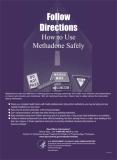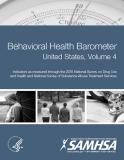
This poster lists five simple ways to reduce the risks of taking methadone for pain relief or medication-assisted treatment of opioid use disorders. It also offers suggested resources for additional information. The poster comes folded and is 11 inches x 15 inches.
Units per Product
Download
Follow Directions: How to Use Methadone Safely
File Type: PDF
File Size: 1.04 MB





